We use affiliate links to run our site. When you buy through links on our site, we may earn an affiliate commission, without any added cost to you. Learn more
Roses are loved for their stunning looks and sweet scents, but if you live in a hot climate, growing them can feel like a challenge. Think about it: high heat, dry spells, and sticky humidity can make these beauties more likely to get sick.
They can fall prey to issues like black spot, powdery mildew, and cercospora leaf spot. But don’t worry! With some smart planning and care, you can keep your roses healthy even when the sun is blazing.
What Makes Hot Climates Tough for Roses?
Hot weather usually means long stretches of sweltering days with strong sunlight and not much rain. These conditions can put stress on your roses, making them more likely to get diseases. Plus, when it’s humid, it’s like rolling out the red carpet for fungal infections.
Here are some common diseases you might face:
- Black Spot: This fungus leaves black spots on leaves, which can lead to leaf drop.
- Powdery Mildew: You’ll notice a white, powdery film on leaves that can mess with how well they photosynthesize.
- Cercospora Leaf Spot: This one creates circular spots that may turn yellow and cause leaves to fall off early.
- EPA-Registered & Proven Effective – Formulated to meet EPA…
- Fast-Acting & Long-Lasting Pest Control – Delivers immediate…
- Safe for Pollinators & Beneficial Insects – Made with naturally…
How to Keep Your Roses Healthy: A Step-by-Step Guide
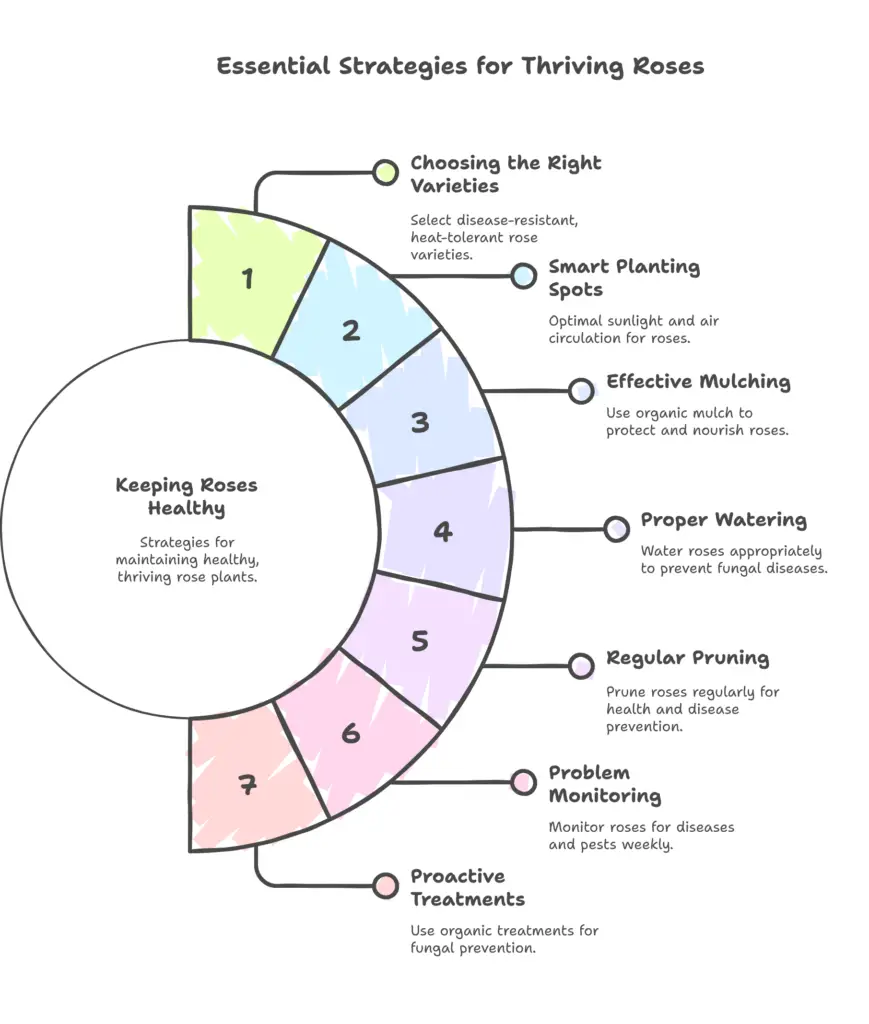
Let’s break down some easy strategies to keep those roses thriving:
1. Pick the Right Varieties:
Go for rose types that are known to resist diseases and can handle the heat. These roses have been bred with special genetics that help them fight off diseases naturally. That means you’ll spend less time spraying chemicals and more time enjoying their beautiful blooms! These varieties look good without needing constant fuss.
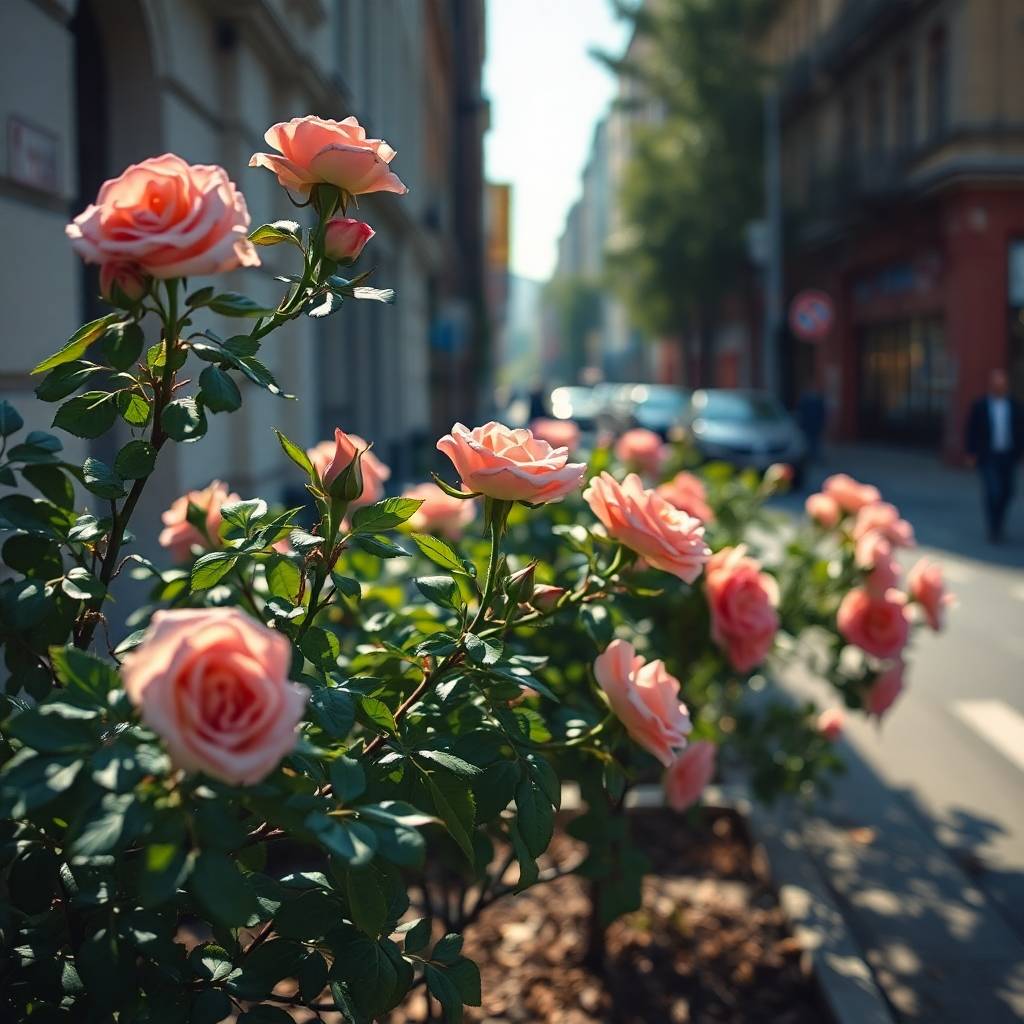
Here are some of the disease-resistant Roses for hot weather:
Rugosa Roses (Rosa rugosa): These tough little guys can handle tough conditions and are super disease-resistant. Once they’re settled in, they can deal with both heat and drought like champs.
Old Garden Roses: Think of varieties like ‘Mundi’ or ‘Mutabilis’. They’re more resilient to heat and drought than those modern hybrid tea roses you see everywhere. Plus, they don’t need as much fussing over, thanks to their hardiness.
Belinda’s Dream: This rose is a triple threat—disease-resistant, fragrant, and pink! It’s part of the EarthKind Roses collection, designed to thrive in hot climates while looking great.
Knock Out Roses: These roses are pretty hardy overall. They can flourish with minimal care, making them perfect for dry spots.
Sweet Mademoiselle: This beauty is not only drought-tolerant but also resistant to pests like thrips. Perfect for those sweltering days!
Iceberg: Known for its ability to handle heat without being fussy, Iceberg roses are ideal if you have a sunny spot with enough water.
- Rose Bush Variety Pack includes one each of three or five…
- Vibrant Blooms: Our Rose Bush plants boast a stunning array of…
- Endless Summer Blooms: Rose Bushes are not just one-time wonders;…
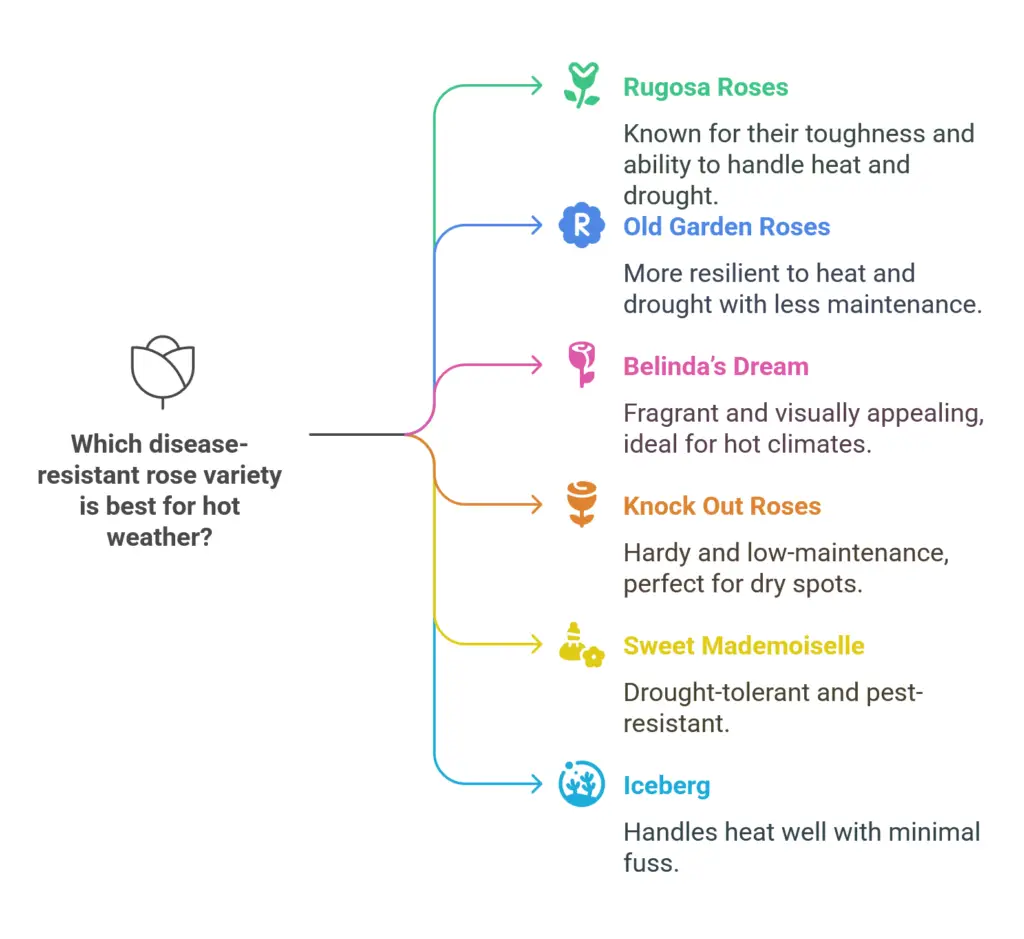
Quick Tips
- Common Mistake: Many people choose roses based on looks alone, ignoring their ability to withstand heat and disease. Don’t make that mistake!
- Pro Tip: Look for those tough varieties that can handle your local climate.
From Classic to Unique: The Ultimate Guide to Different Rose Species
2. Choose a Smart Planting Spot:
Sunlight:
Roses love soaking up the sun! Aim for 6 to 8 hours of direct sunlight each day. This not only helps them grow strong but also dries up any dew quickly, which keeps pesky fungi from settling in.
Here’s a nifty tip: Plant your roses near something light-colored, like a wall, to bounce more sunlight onto them and keep the humidity around their leaves down.
Air Circulation:
Proper spacing is key for keeping air circulating around your roses. Here’s how to do it:
1. General Spacing: For most types of roses, aim for at least 3 to 4 feet between each plant. This helps air move around and prevents fungal diseases that love damp conditions.
2. Compact Varieties: If you’re planting smaller or miniature roses, you can get away with a bit less space—around 2 to 3 feet apart should do. Just make sure there’s still enough room for air to circulate around each one.
3. Large Varieties: Got bigger rose bushes like hybrid teas or grandifloras? You’ll want to give them more space—about 4 to 6 feet or even more. They need room to grow big and healthy, and good airflow is essential!
Rose Bush Care Tips: How To Grow Roses Effortlessly

3. Use Mulch Magic:
Using a layer of organic mulch, like shredded bark or compost, is a smart move for your garden. It does three important things: First, it keeps the soil cool. Second, it helps retain moisture, so your plants don’t dry out. And finally, it prevents water from splashing onto the leaves.
Why should you care about that? Well, water droplets can carry fungal spores, which can harm your plants. Think of mulch as a bouncer at a club—it stops those pesky spores from getting in and messing things up.
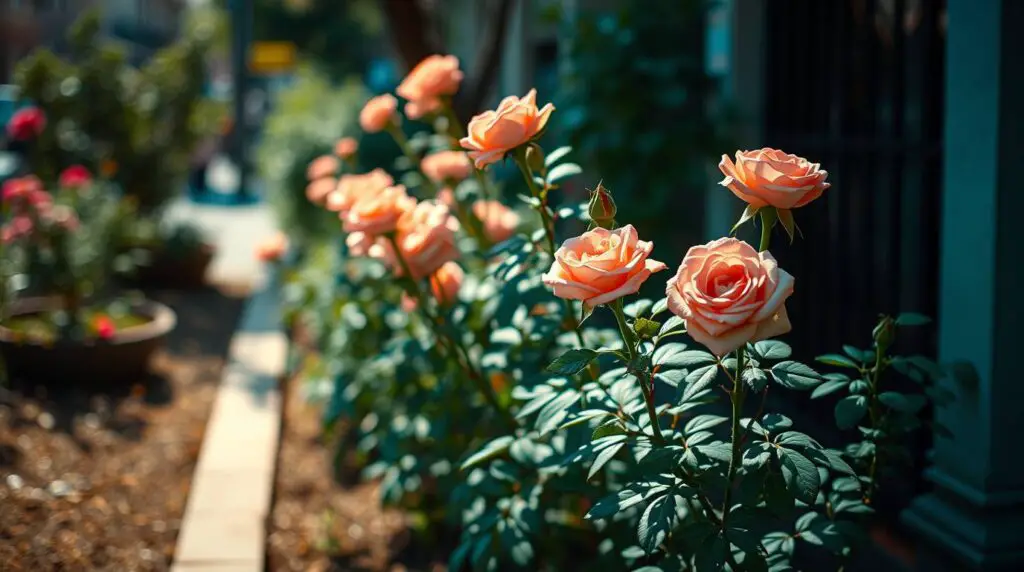
Here are some top choices for rose mulch that you might want to consider:
-
Sugar Cane Mulch: This stuff breaks down quickly, which is great for enriching your soil. But here’s the catch—it needs to be replaced often. Plus, it’s pretty light, so weeds can sneak through, meaning you’ll have to keep an eye on it.
-
Shredded Leaves: Think of this as nature’s gift! They turn into a nutrient-packed layer on top of your soil. They’re perfect for both roses in the ground and in pots.
-
Wood Chips: A solid choice that sticks around longer than sugar cane mulch. If you mix it with shredded leaves, you’ll get even better results.
-
Pine Bark and Wood Chips: This combo is a winner! It’s organic and doesn’t have any nasty herbicides, making it safe for your beloved roses.
-
Compost: Using compost as mulch is like giving your plants a little boost. It adds good microbes to the soil and makes it healthier overall.
Mulches You Should Skip
-
Rocks or Stones: While they might look nice, they can heat up too much in the sun and harm your roses’ roots. Plus, they don’t hold moisture or provide any nutrients.
-
Cedar Mulch: You can use it if you want, but it might not be the best option because it can sometimes mess with other plants. Some gardeners don’t have problems with it, but it’s something to keep in mind.

Composting Roses: Can You Put Rose Flowers in the Compost?
3. Water Wisely:
Before you grab that watering can, take a moment to check if your rose’s soil is thirsty. Just poke your finger into the dirt up to your second knuckle. If it feels dry, it’s time to water! You can also use a moisture meter if you have one lying around.
Watering your plants at high noon? That’s a classic rookie mistake! Instead, get up a little early and water them in the morning. This way, the leaves can dry out by midday, preventing any nasty fungus from moving in.
How Often to Water:
For Potted Roses: When the heat cranks up, your potted roses might get really thirsty. They could need a drink every day or every other day, especially when it’s hotter than 90°F (32°C).
For Ground-Planted Roses: If your roses are planted in the ground and have been there for a while, give them a good soak once or twice a week. But keep an eye on the weather! If it’s super hot out, you might want to step it up and water every three days.
Want to take it a step further? Consider using drip irrigation. Think of it as giving your plants a refreshing drink straight to their roots, without soaking their leaves. Overhead sprinklers can turn your plants into cozy homes for fungal spores!
4. Prune Regularly:
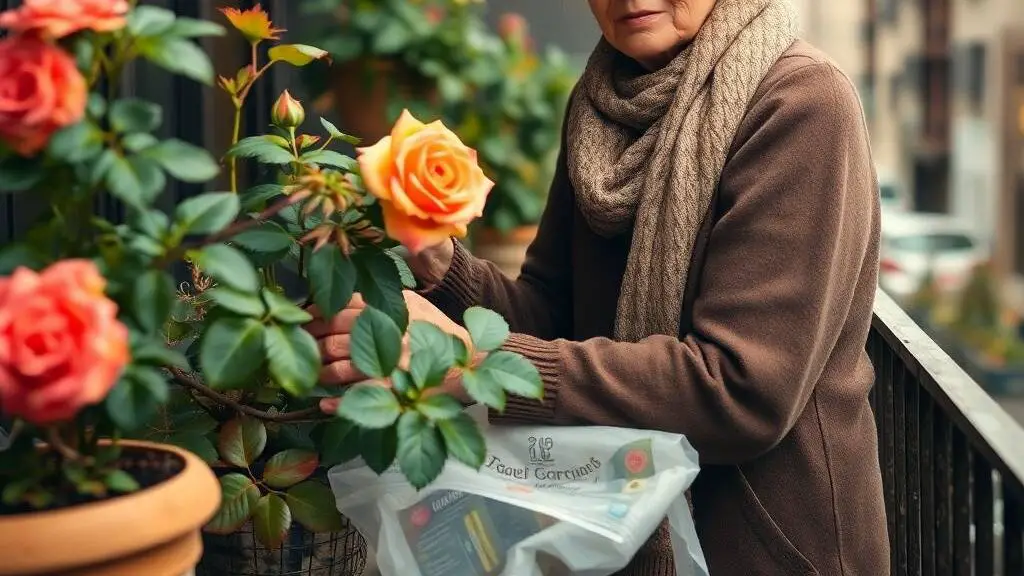
Pruning isn’t just about shaping your plant—it’s a disease-prevention tactic. Pruning roses in hot climates keeps them healthy and disease-free. Here’s how to do it right.
Pruning Techniques:
- Airflow Pruning: Cut back canes growing inward or crossing each other. This helps air flow and stops fungal diseases.
- Deadheading: After flowers fade, snip the stem just above the first set of five-leaflet leaves. It encourages more blooms and keeps your plant looking neat.
- Severe Pruning: If necessary, cut back the plant significantly to rejuvenate it. Roses can tolerate severe pruning and will regrow vigorously.
Pro tip
- Always use clean, sharp tools to avoid spreading any germs. Don’t forget to disinfect your tools between cuts if you’re dealing with sick plants.
Keep an Eye Out for Problems:
Check your roses every week—it’s a good habit! Keep an eye out for some telltale signs that something’s off.
If you see black spots with yellow edges, that’s black spot disease. If there’s a powdery coating, you’re dealing with mildew. And if you find round brown patches, that’s cercospora.
If you spot any of these, don’t wait—snip off those leaves and toss them in the trash. Seriously, don’t compost them; those nasty spores can hang around and cause more trouble.
A quick tip:
Sprinkle some used coffee grounds around the base of your roses. They might help keep fungi away and give your plants a nice little nitrogen boost!
Be Proactive with Treatments:
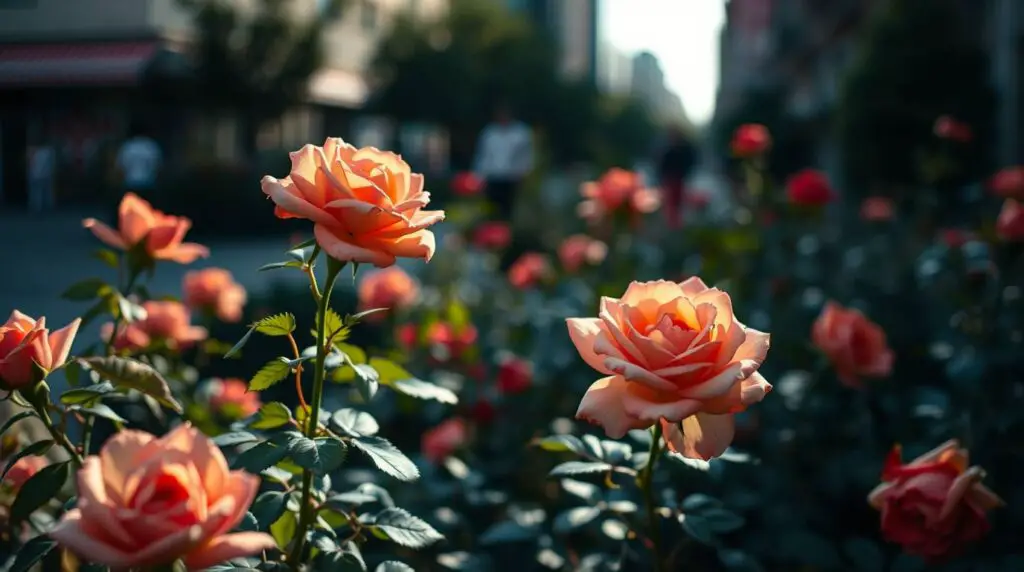
When the humidity is high and won’t let up, a preventative spray can really come to the rescue. Sure, it’s a good idea to cut back on chemicals, but sometimes your plants need a little extra support:
Think about using organic sprays like neem oil when the weather gets muggy. It can really help keep those nasty fungi at bay. Neem oil and sulfur-based fungicides are like a cozy blanket for your plants—they’re gentle on them but tough on unwanted fungi. Just spray them on when it’s humid, and you’ll be giving your roses an invisible shield.
Stay away from synthetic pesticides unless you have no other choice; they can wipe out the beneficial insects that help your garden thrive.
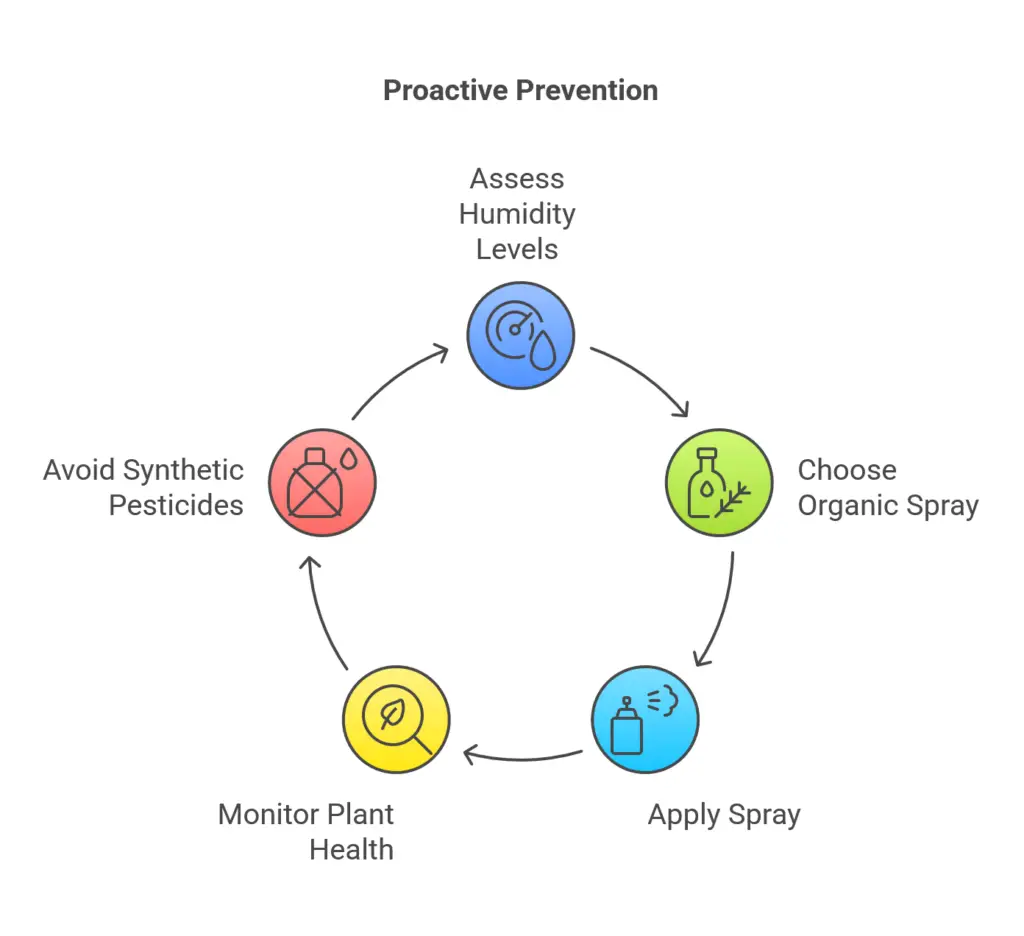
To summarize:
Growing roses in hot climates isn’t about battling nature—it’s about working with it. Choose the right plants, water smartly, and let mulch do the dirty work. Before you know it, you’ll have a garden that’s not just surviving but thriving, proving that even under the fiercest sun, beauty finds a way.
Amazon and the Amazon logo are trademarks of Amazon.com, Inc, or its affiliates.

Hi there! My name is Prasenjit and I’m an avid gardener and someone who has grown a passion for growing plants. From my hands-on experience, I have learned what works and what doesn’t. Here I share everything I have learned.


